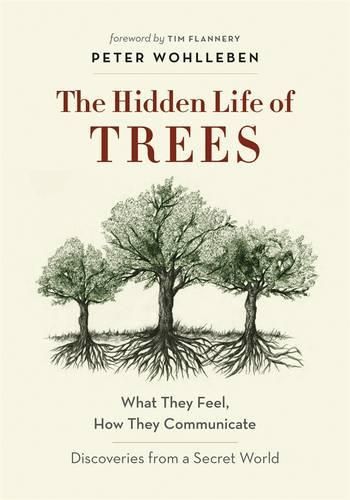Readings Newsletter
Become a Readings Member to make your shopping experience even easier.
Sign in or sign up for free!
You’re not far away from qualifying for FREE standard shipping within Australia
You’ve qualified for FREE standard shipping within Australia
The cart is loading…






Are trees social beings? In this international bestseller, forester and author Peter Wohlleben convincingly makes the case that, yes, the forest is a social network. He draws on groundbreaking scientific discoveries to describe how trees are like human families: tree parents live together with their children, communicate with them, support them as they grow, share nutrients with those who are sick or struggling, and even warn each other of impending dangers. Wohlleben also shares his deep love of woods and forests, explaining the amazing processes of life, death, and regeneration he has observed in his woodland.
After you have read The Hidden Life of Trees, a walk in the woods will never be the same again.
$9.00 standard shipping within Australia
FREE standard shipping within Australia for orders over $100.00
Express & International shipping calculated at checkout
Are trees social beings? In this international bestseller, forester and author Peter Wohlleben convincingly makes the case that, yes, the forest is a social network. He draws on groundbreaking scientific discoveries to describe how trees are like human families: tree parents live together with their children, communicate with them, support them as they grow, share nutrients with those who are sick or struggling, and even warn each other of impending dangers. Wohlleben also shares his deep love of woods and forests, explaining the amazing processes of life, death, and regeneration he has observed in his woodland.
After you have read The Hidden Life of Trees, a walk in the woods will never be the same again.
My favourite childhood books were The Faraway Tree series by Enid Blyton. It was wondrous to imagine the lives of trees being full of feelings, thoughts and relationships. I would trawl my neighbourhood in search of my own adventure trees, certain of the mysterious potentialities waiting in their woody boughs if only I could access them. In The Hidden Life of Trees, Peter Wohlleben provides such access, elucidating a world within the forest, whose social complexity, responsiveness and skill surpasses even the most famously enchanted woods gifted to us in fiction.
With a reverence acquired throughout decades of forestry experience, Wohlleben describes how trees keenly work toward the greater good of the forest, understanding the value that each member plays in maintaining an optimal environment for a pleasant and prosperous life. From sharing food and labour, to alerting their kinfolk to potential danger, The Hidden Life of Trees delivers clear, substantiated examples of ways trees not only adapt but teach, learn and help each other out. Wohlleben takes pains to make clear that the care trees demonstrate toward one another goes beyond a survival mechanism. He ventures that trees even seem to prioritise specific relationships – some of which are less than functional.
Wohlleben’s forest portrait extends beyond his barky muse, explicating both the cooperative and parasitic interspecific relationships trees share with other forest inhabitants. From the fungi that help trees communicate (the ‘wood wide web’), to the rogue herds of ranging mammals that can devastate a tree nursery, wiping out an entire generation in an event possibly akin to a natural disaster for a tree community, the book provides insight into the intricacy of a forest ecosystem, and a reminder that nature, in her relentless pursuit of balance, can be a cruel mistress to sentiment.
By unveiling the potential magnitude of sentience experienced by trees, the book drags up ‘the hard problem’ – consciousness. Does personal mawkishness lead Wohlleben to anthropomorphise the forest, or do the life-experiences of other systems and communities often closely mirror our own? The rise of post-humanism coupled with a desperate ecological need for us to reprioritise the symbioses of the natural world may find an audience increasingly willing to consider that our own consciousness is not so exclusive. As an added bonus for the despondent reader, seeing your own society reflected in the communities of trees can throw a staggering curveball at your existential crisis. Because let’s be honest: who doesn’t see the life of a tree as marvellous and worthy, simply because it is?
Discover the wonders of nature in this fascinating and awe-inspiring collection.